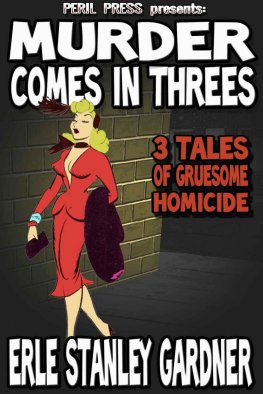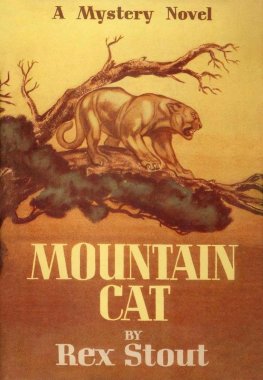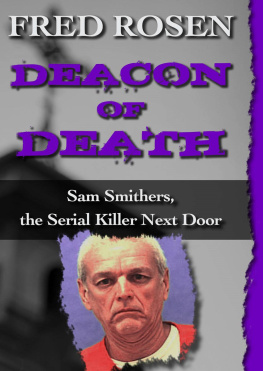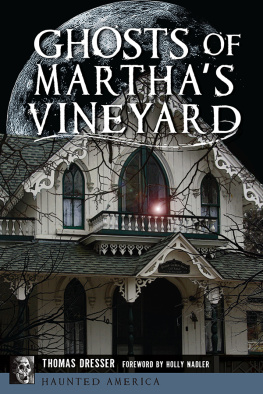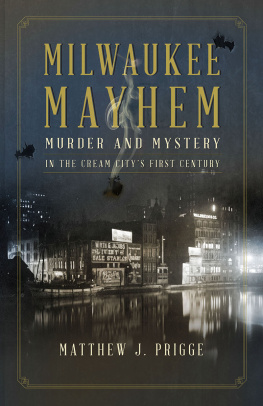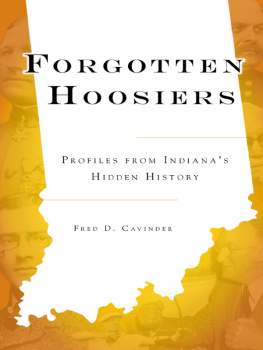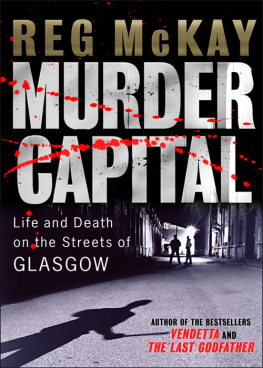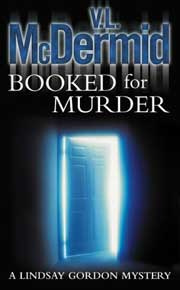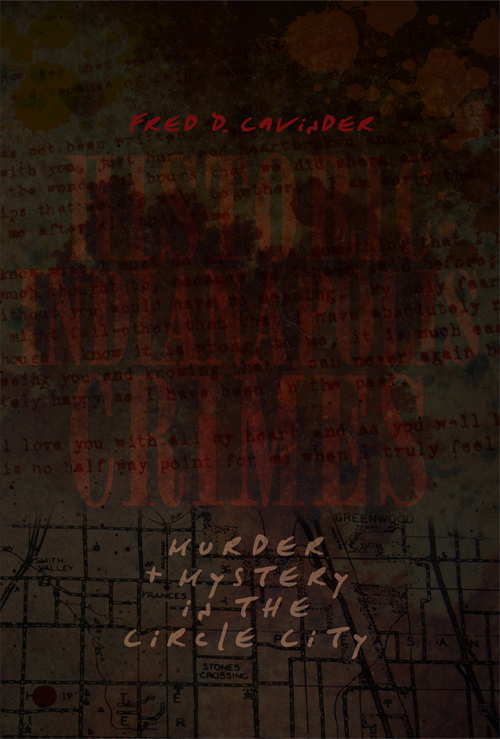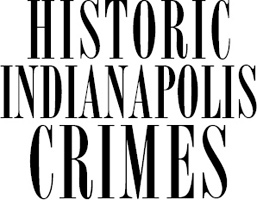
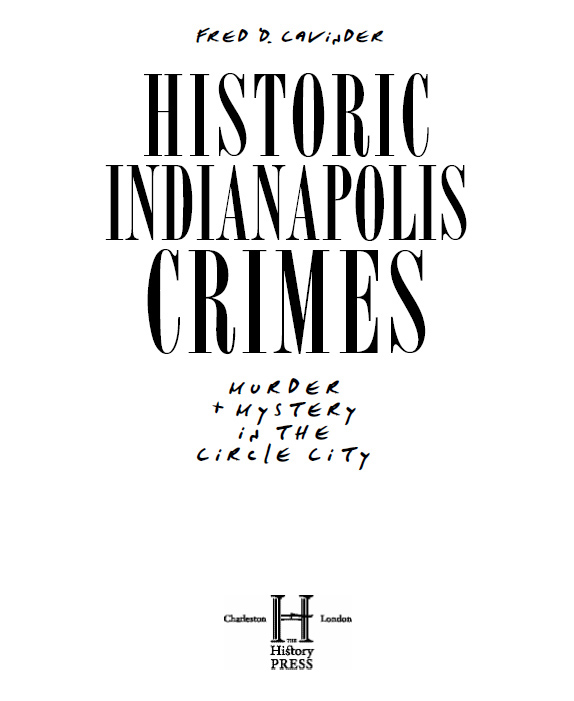
Published by The History Press
Charleston, SC 29403
www.historypress.net
Copyright 2010 by Fred D. Cavinder
All rights reserved
First published 2010
e-book edition 2011
ISBN 978.1.61423.203.2
Cavinder, Fred D., 1931-
Historic Indianapolis crimes : murder and mystery in the Circle City / Fred D. Cavinder.
p. cm.
print edition ISBN 978-1-59629-989-4
1. Murder--Indiana--Indianapolis--History. 2. Murderers--Indiana--Indianapolis--History.
3. Murder victims--Indiana--History. I. Title.
HV6534.I6C38 2010
364.15230977252--dc22
2010020426
Notice: The information in this book is true and complete to the best of our knowledge. It is offered without guarantee on the part of the author or The History Press. The author and The History Press disclaim all liability in connection with the use of this book.
All rights reserved. No part of this book may be reproduced or transmitted in any form whatsoever without prior written permission from the publisher except in the case of brief quotations embodied in critical articles and reviews.
INTRODUCTION
Indianapolis patrolman Hugh Burns was off duty one evening in the summer of 1883 when a citizen approached him about an argument underway in a nearby boardinghouse. The supplicant knew that Burns was a cop. As Burns entered, the argument became physical, and one of the participants, John Jeter of Kentucky, pulled a weapon and shot Burns to death. Jeter escaped punishment, contending that he didnt know Burns was a policeman. Burns was the first Indianapolis policeman murdered in the line of duty, but he was not the last, and civilians in the capital had been homicide victims for years before Burns died.
The first murder in the city, then a mere fraction of its later size, occurred in the 1830s, and slayings never have stopped. Because of its size, the city is destined to be the capital of Hoosier homicidesgrowing population does that. Yet, with one possible exception, the Indiana capital has never experienced serial killers or endured the drama and fear of, say, Son of Sam.
Some homicides stir the public. Cases in point are the heartless torture and slaying of Sylvia Likens and the Indianapolis massacre of seven, including children. The public seems to register limited concern about many killings; television dulls murders as they come into your living room nightly on both the news and crime dramas. On TV programs, the killer is caught within an hour via state-of-the-art tools used almost instantaneously by actor-investigators; sometimes they employ computer magic that exists only in the minds of writers.
In real life, some killers are the stuff of legendJack the Ripper comes to mindand some so-called killers are legendary in Indiana criminal annals. Luminary bandit John H. Dillinger was born in Indianapolis. Despite his shoot-it-out image, he was accused of only one slayingthe death of East Chicago policeman William P. OMalley. Some think it perhaps wasnt Dillingers shot at all.
In Dillingers day and before, slayings were simpler; in a sense, they were old-fashioned murders: for hire, slayings of passion, homicides for retribution, killings to eliminate witnesses and collateral damage. Today, these motives are often eclipsed by the slayings in drug deals gone bad, drug-high homicides and drive-by shootings. Not only are the gunmen often unknown, but sometimes the identity of the real intended victim also remains uncertain.
Homicides gain added sensation when the killer escapes justice. Murder does not always out, despite what the novelists and forensic scientists tell you. The era has a lot to do with it; years ago, DNA evidence and other investigative techniques and technologies didnt exist. The most notorious unsolved crimes of old created a cult of curiosity; newspapers and magazines routinely dig up anniversary angles to rehash the still mysterious homicides.
Deciding on intriguing homicides obviously involves extensive selectivity. Should the followers of Hoosier Jim Jones in Guyana be included? Hoosier Jones began his tragic course after founding the Peoples Temple in Indianapolis. Certainly the deaths of nine hundred of his followers in Guyana were homicides. Obviously, the gunmen who shot some of the victims were killers. Joness participation presents a fine point; convincing others to kill themselves differs marginally from applying the poison yourself. Jones was cruel, controlling and probably delusional. But his role as a murderer is best left to philosophers and, possibly, theologians.
Obviously, parameters must be narrower than that.
Murdered policemen are a special category; the job puts them in harms way. One might typify Indianapolis police killings with three casesone shockingly brutal, from the 1930s era of bandits; another a landmark in murder punishments; and a third that launched one of the biggest manhunts in Indianapolis history. Let these police murders, then, serve as templates for Indianapolis police slayings.
Material for this book has been collected from files of the Indianapolis Star and the now-defunct Indianapolis News and Indianapolis Times, from some now-defunct weekly Indianapolis newspapers, from historical documents such as the Oberholtzer confession and, in a few cases, from books about individual murders: The Indiana Torture Slaying by John Dean (1966), My Indiana by Irving Liebowitz and In the Eyes of the Law by Tom Faulconer.
Part I
LETHAL FOR THE LAW
Making Dillinger Look Like a Piker
Dr. Emmett Rose was out on a call the afternoon of April 27, 1936, when a man approached his wife in their Indianapolis home-office near Garfield Park.
Mrs. Rose was suspicious. The caller said that a friend had been shot because he had been running around with another mans wife. Not so unusual in itself. But the wounded man was being helped by his three companions from a car with Illinois license plates. I thought it strange someone should bring a wounded man all the way from Illinois for my husband to treat, she said later. When assured that the doctor would not return for some time, the men drove away.
When he returned and heard what had happened, the doctor told his wife to call the police. The police told her that if the men returned she should call again.
Later that day, Mrs. Rose peeked into her husbands office and saw him talking to the man who had been there earlier. The expression on Dr. Roses face served as a warning to her, and she retreated out the back door of the house at 2153 Barth Avenue. Although the men in the parked car saw her speed to a nearby drugstore, they took no action. I dont know why they didnt shoot me, but they didnt, she said. At the drugstore, she asked the clerk to call police.
The men Mrs. Rose was dealing with, although she didnt know it, were the Brady gang, which had been formulated the year before in an Indianapolis garage. Al Brady, born in Goodland, Indiana, was neglected, orphaned at sixteen and imprisoned for burglary. In prison, he determined to become a better criminal. He hooked up with James Dalhover, a fellow inmate from Cincinnati, who had a record for making illegal liquor, stealing cars and committing assaults. In October 1935, they were joined by Clarence Lee Shaffer Jr. of Indianapolis, who by age twelve had been arrested for stealing cars and stripping them. Shaffer induced Rhuel Charles Giesking, also of Indianapolis, to later join the gang.



